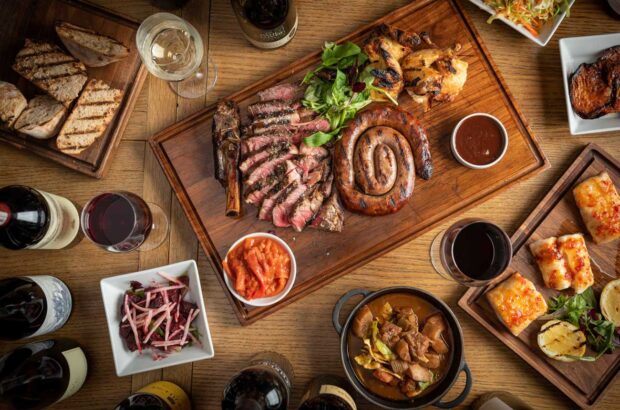Wine lovers worldwide can't get enough of Chile's fruit-driven red wines. AMY WISLOCKI visits to find out which Chilean grapes have the most potential.
Chilean Merlot and Cabernet Sauvignon – both are firm favourites with fans of the New World style who want a change from Australia. And it’s little surprise that the wines have been so successful: labour and land are cheaper than many other New World regions so the wines are keenly priced, and the wines themselves are getting better and better. Chile has almost perfect conditions for viticulture, and the new generation of winemakers has learned from Europe, adopted new technology and started to address the problem of excessive yields. ‘We’re in the midst of a discovery in Chile,’ says Agustin Huneeus, owner of Casablanca Valley’s Veramonte winery. ‘We’ve blown away the traditional distinctions and are adapting varietals to terroir.’ Certainly, now that producers have got the technology in place, they are turning their attention to viticulture – identifying micro-sites, planting up the hillsides and experimenting with varieties. Alongside the main two red players, others are also making a showing – from Pinot Noir and Syrah to Malbec and Sangiovese.
CHILEAN CABERNET SAUVIGNON
Although many people usually think of Chile and Merlot in the same breath, Cabernet is still the main red player – in terms of sales and plantings. In 2000 there were 36,000ha (hectares) of Cabernet Sauvignon plantings; Merlot and Carmenère together account for less than half this area.’Cabernet is king,’ says Aurelio Montes, owner of Montes and consultant to four other Chilean wineries. ‘If you polled 100 people on a London bus, none would have heard of Carmenère. People are talking about new grapes, but the money’s still being spent on Cabernet Sauvignon.’
https://www.decanter.com/features/the-new-chilean-wine-249623/
The Chileans are old hands at producing Cabernet – in a wine industry that only really matured in the mid to late-1980s, experience in working with a particular grape counts for a lot, and the Cabernet vines are older than most. Cabernet often makes up a large proportion of the premium blends, which vary in style from Bordeaux-like to more typical New World, forward fruit. Montes is enthusiastic about the role of Chilean Cabernet in blends: ‘Cabernet goes particularly well with Carmenère – the elegance of the former with the velvety tannins of the latter. In this way buyers are getting some of what they know with some adventure thrown in.
Santa Rita, which has the biggest single estate (700ha) in Maipo (as well as a beautiful hotel and gardens), at Alto Jahuel, has planted it 70% with Cabernet Sauvignon, and is regrafting Chardonnay vines with Cabernet. Winemaker Andres Ilabacar believes Maipo is better than Apalta for Cabernet Sauvignon, as the fruit is softer and silkier – the winery crafts its top wine, Casa Real, 100% from this grape. ‘We had to learn canopy and irrigation management when we planted on the hillsides in 1993. If you don’t get it right the grapes burn.’Verdict: The lessons learned have paid off. Cabernet is core to the success of Chilean wine – and will be for some time to come.
MERLOT AND CARMENERE
Criticisms are levelled in our panel tasting this month (see p99) that these wines do not age well. Given that some of Chile’s premium reds now sell at fairly hefty prices, this is an issue that needs addressing. Mario Pablo Silva, managing director of Casa Silva and director of Chilean wine association ChileVid, agrees that today’s Carmenère and Merlot wines are suited to drinking young, or will age as part of a blend. ‘The potential to age will improve as specific sites and microclimates are identified,’ he adds. In the meantime, we should be buying them as everyday drinking wines rather than wines to lay down. Now that Carmenère is coming into its own after a history of being mistaken for – and mixed in with – Merlot, Chilean producers and fans of the wine are enjoying their distinct varietal flavours.
Since Carmenère needs two weeks longer on the vine than Merlot, isolating it enables both grapes to be harvested at optimum ripeness, without compromising on one or the other. This has helped to eliminate the green, unripe character that was often associated with Carmenère, though not its typical peppery crunchiness. Huneeus, of Veramonte, is certain that Carmenère’s future role should be as part of a blend. ‘It’s a great grape, but it’s one-dimensional,’ he says. ‘It has the best mouthfeel of any red; low in acidity but with lots of flavour. We have three choices: eliminate it, promote it as our national grape or use it as a unique component in blends. I think the future lies in the last option.’
Among the most experienced producers with Carmenère are Viña Carmen and Santa Ines – both were among the first in Chile to produce a single-varietal bottling, proving that for some, the grape has enough character to make it on its own. Matias Lecaros, Viña Carmen’s organic winemaker is convinced that Carmenère is the country’s most exciting red. ‘It reflects the rustic spirit of Chile,’ he says. The delay in isolating Merlot and Carmenère has been a setback for Chilean winemakers. As Merlot gradually emerges on its own, they’re still on a learning curve to discover where it grows best.
Pascal Marty, technical manager at Almaviva for Baronne Philippe de Rothschild, says that although the best Carmenère grows in Rapel, he has his doubts about Merlot. ‘I think perhaps Maipo is the best bet, but as there isn’t much pure Merlot and what is there is young, it’s difficult to say.’ Likewise, Andres Ilabacar at Santa Rita says the Chileans haven’t yet found the perfect place: ‘Maybe Casablanca, as it’s cooler, with the maritime influence. At the moment, Merlot is being planted in many different valleys, to learn more.’ Verdict: Merlot and Carmenère wines have clearly come on a great deal even in the last five years or so. And as individual sites are identified, and confidence in dealing with the isolated vines grows, the results will become more complex and, hopefully, more ageworthy.
CHILEAN PINOT NOIR
‘Nobody has yet made a good Chilean Pinot Noir,’ pronounced Veramonte’s Huneeus as we stood in his Casablanca vineyards. That’s quite a bold admission, from a company with a stake in a region that is considered one of Chile’s most promising for this varietal. ‘Everyone’s fooling around with it, and it’s too early to tell whether it’s got a future in Chile. But if it’s going to work anywhere, it’ll work in Casablanca.’ Producers are indeed a fair way off perfecting Pinot Noir, and if you want a wine that tastes Burgundian, forget it. A common fault seems to be obvious alcohol on the nose and palate. Nonetheless, fans of the New World style of Pinot will find a few wines that display sweetish, slightly meaty, smoky red fruit characters. Casa Lapostolle, which describes itself as ‘Chilean by nature, French by design’, and boasts Michel Rolland as consultant winemaker, is planning to add a Pinot Noir to its Cuvée Alexandre range next year, and this is just one of the many wineries working hard on the varietal. Verdict: It’s early days, but watch this space – particularly in Casablanca.
https://www.decanter.com/premium/chilean-pinot-noir-wines-panel-tasting-results-423383/
CHILEAN SYRAH
The excitement about Syrah in Chile is palpable. As Aurelio Montes stands on a steep slope looking down over the Apalta vineyards, he bends down to look more closely at the Syrah grapes for his new wine, Folly. ‘We had to take 300 truckloads of stones away to plant here,’ he says. The label on the bottle proudly proclaims: ‘The only place where the grapes are harvested by acrobats’. Planted on the steepest, top strip of Apalta, the vines are harvested at 25hl/ha and production is tiny. While Chilean Pinot Noir is still in its infancy, Syrah is even more so. Just 19ha existed in Chile in 1996; four years later this had shot up to 2,000ha. It is telling that the Chileans plumped for ‘Syrah’ rather than ‘Shiraz’ and it is the right label – the wines are more meaty, smoky in style than rich and chocolatey. Verdict: The grape seems more at home in Chile than Pinot Noir, and the wines that are emerging point towards a bright future for the grape.







